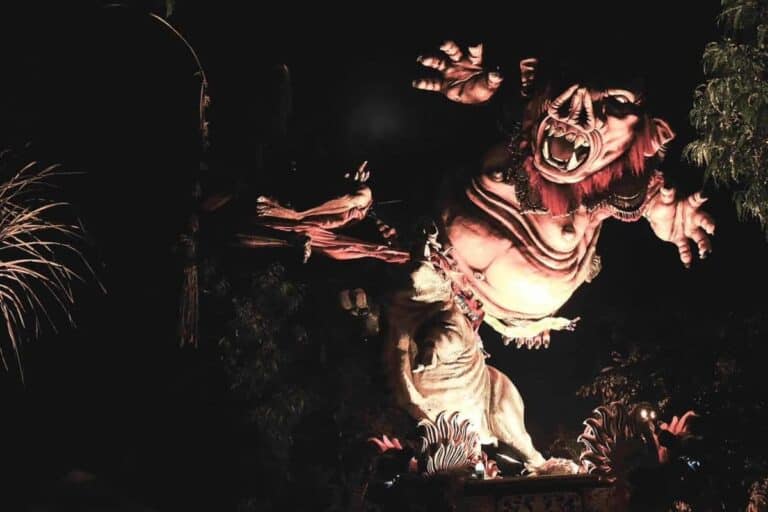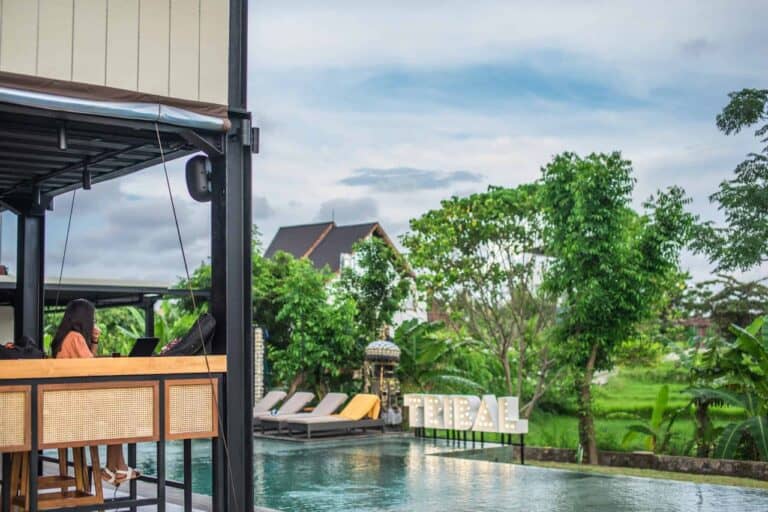Most countries, even cities or islands, have their own special allure and feature you can only find in that place.
What is Bali’s you ask?
Other than an incredible atmosphere and feel on the island, here are some things that make Bali unique.
1. Same Name Wherever You Go

Balinese people name their children based upon their birth order.
Wayan/Putu/Gede for the oldest, Made/Kadek/Nengah for the middle, Nyoman/Komang for the third, and Ketut for the last child (as it means bonus child).
In the past, the Balinese Government suggested people should have only 3 children, which is why the fourth is counted as ‘the bonus’.
For a fifth child, they will go back to the start.
2. Balinese Hinduism is different than Indian Hinduism

Hinduism originated in India and Pakistan, but the religious practices you’ll see in Bali are quite different.
Equally as vibrant and enriching, Balinese Hinduism has its own rituals, ceremonies and beliefs that set it apart.
Both styles of Hinduism respect and appreciate one another.
3. Balinese Calendar
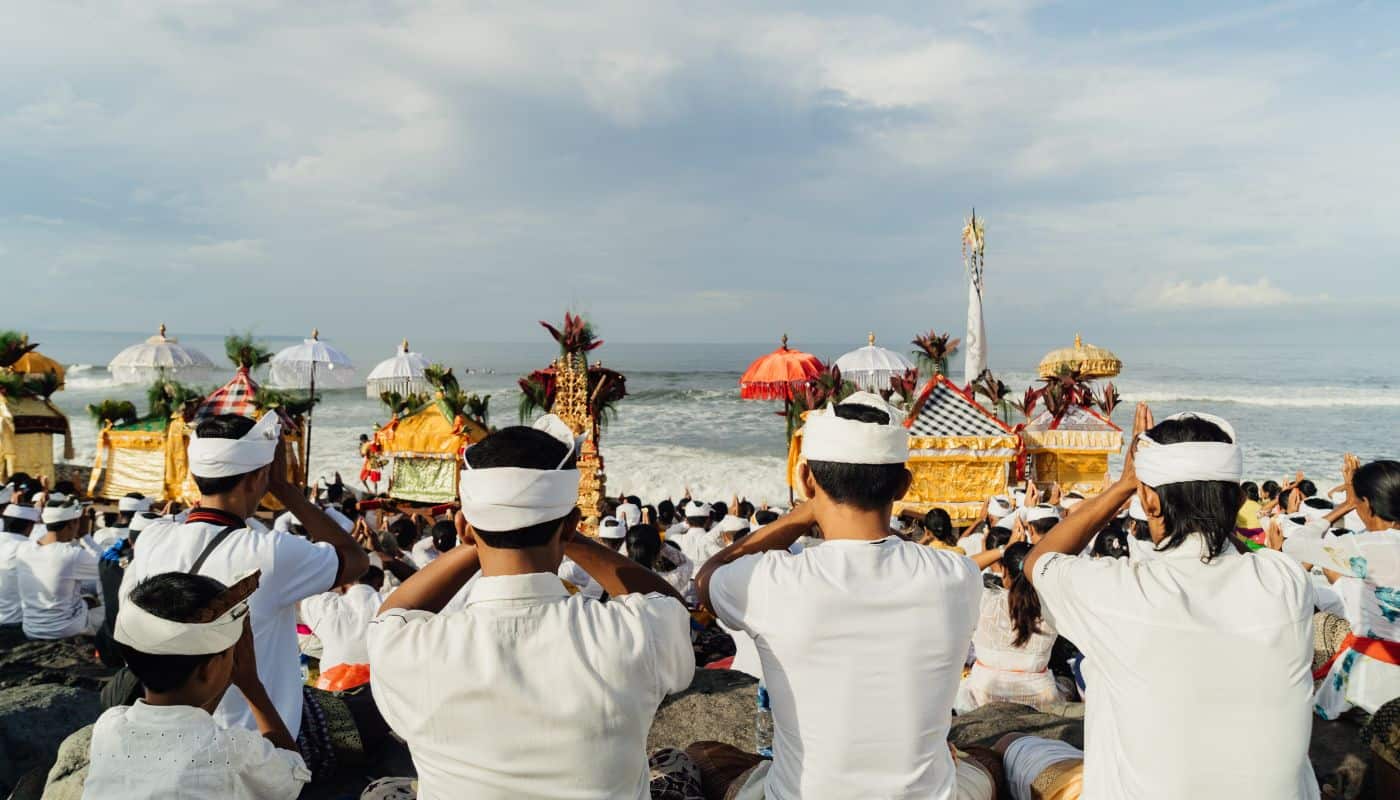
Balinese people use their own Balinese Saka Calendar, applied simultaneously with the international calendar.
It’s based on moon phase , and it is approximately as long as the Gregorian year.
The Balinese Hindu festival of Nyepi, the day of silence, marks the start of the Saka year.
Tilem Kepitu, the last day of the 7th month, is known as Siva Ratri, and is a night dedicated to the god Shiva. Devotees stay up all night and meditate.
There are additional 24 ceremonial days in the Saka year, usually celebrated at Purnama or Full Moon.
4. Island Closed!

There’s a celebration in Bali for the entire island, called “Nyepi” or “Balinese Day of Silence”.
It is the New Year in Balinese Calendar, and is a day of silence, fasting, and mediation.
It’s not a regular holiday as you can imagine. It’s really an OFF day in many aspects.
No light, no sound, no going out from your house, no transportation… Just absolute silence… Even the airport is closed that day.
Hotels, hospitals and many emergency businesses still operate. If people have an emergency, they need to ask permission to leave their home from the pecalang or traditional local security guards.
There is a huge build up to the day of silence with ogoh-ogoh processions and traditional ceremonies.
It is one of the most unique things about Bali.
5. Head Carrying instead of Hand Carrying

Many Balinese women will carry things on their heads – such as baskets and offerings.
Often seen by the ladies working on the beach and during traditional ceremonies, it’s pretty incredible just how much they are able to hold.
6. Mass Kissing Ceremony
The Omed-omedan Balinese ceremony is held every year, 1 day after Nyepi.
Young members of the Banjar Kaja Sesetan in Denpasar, who are aged 17-30 and unmarried, face each other on the main road, separated based on gender.
From each side, one female and one male will be selected.
The two will lock lips and kiss while being doused with water by the remaining youth. It is supposed to bring good luck to the banjar.
7. Vibrant Funeral Ceremonies

When you find a huge number of people parading on the street carrying small temples decorated with beautiful carvings, you are most likely watching Ngaben.
It is not a cultural parade, but a traditional Balinese funeral procession.
The temple-like structures contain the body of the deceased, that is transported from the person’s house to the cremation site.
The body will then be moved from the procession structure to a new, handmade, ox shaped structure.
A huge fire then ignited, burning the body and the ox.
This ceremony must be carried out by Balinese Hindus, as it is believed it makes it easier for the spirits of the deceased to reach their next destination.
8. Towering, Bamboo, Street Decorations
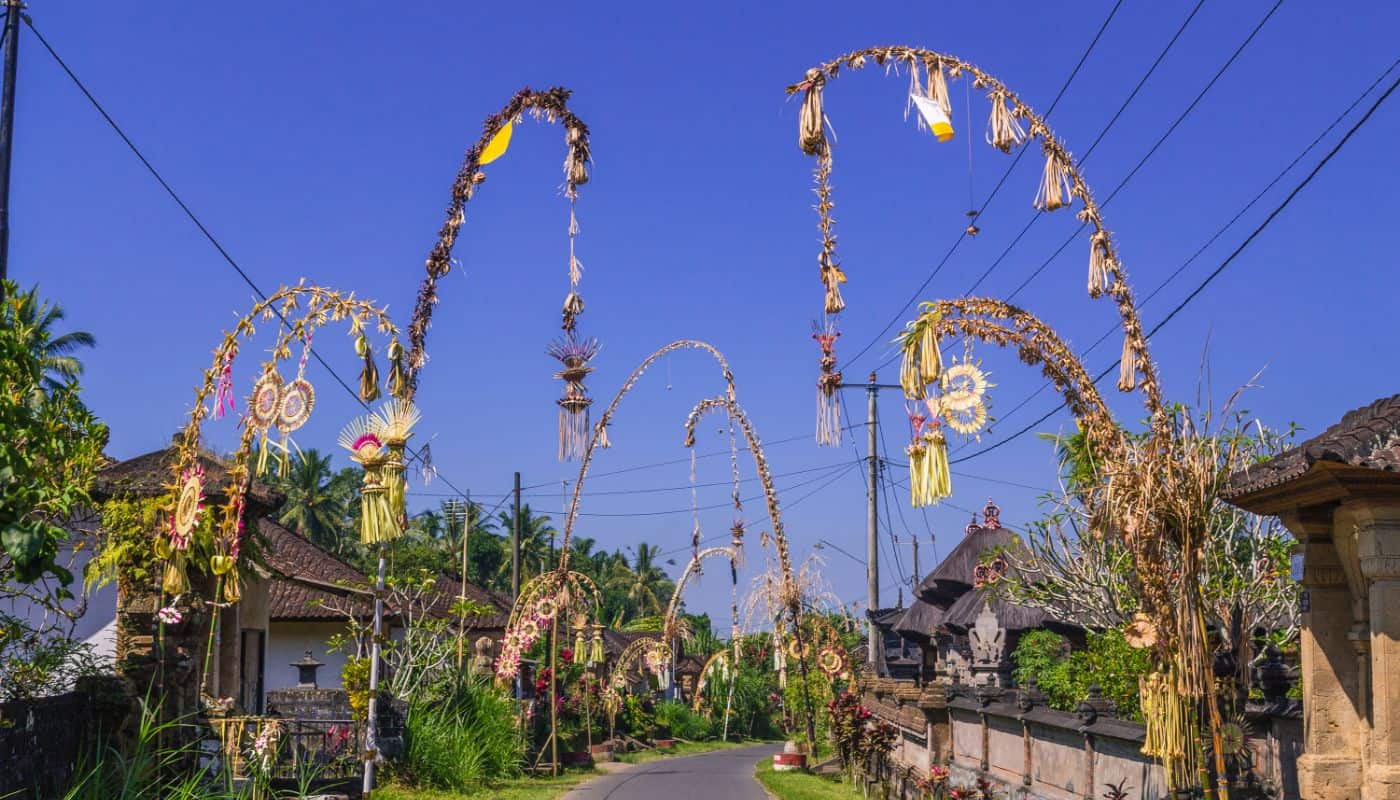
Especially leading up to important ceremony days, you will see towering bamboo poles along the streets named penjor.
The decorations are made of a whole bamboo shoot, decorated with coconut leaves and bright geometric shapes.
At the edge of penjor, there is a flower decoration called sampian.
9. Black and White Cloth

The iconic black and white, plaid cloth seen around Bali is called kain poleng or saput poleng.
Saput means ‘cloth that is wrapped’, while poleng is a term for alternating black and white colors, a symbol of Rwa Bhineda – the balance of nature.
The cloth is usually only used by certain Balinese people, such as pecalang, dalang, and drama players who act as punakawan (clowns).
You will also find it around objects that are believed to have magical powers and need to be respected such as trees, statues, and gates.
10. Daily Colorful Offerings
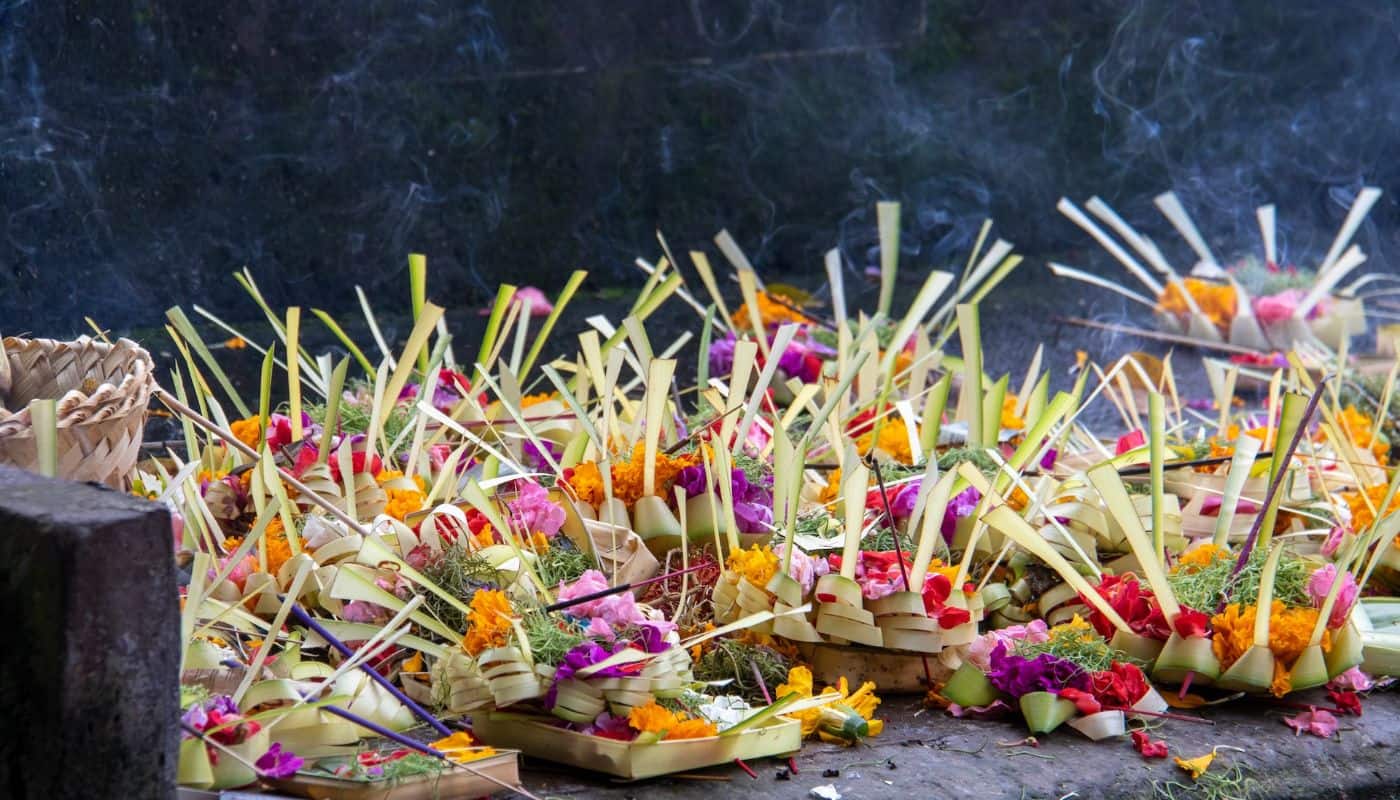
Prepared by local Balinese women from coconut leaf, and filled with colorful flowers, rice, and a small treat, these daily offerings a small part of the Balinese Hindu practice.
The canang sari, are to thank the Sang Hyang Widhi Wasa in praise and prayer.
They can be found everywhere from outside a local home to temples and businesses.
Don’t worry about stepping on them, the Balinese believe that once placed, everything that happens is meant to be.
Final Thoughts
There are many things that bring tourists to Bali. Often these small unique details are missed by the big lights and traffic of the tourist centres.
Take a moment to really appreciate the beauty and mystery of the island with these fun and quirky facts.


